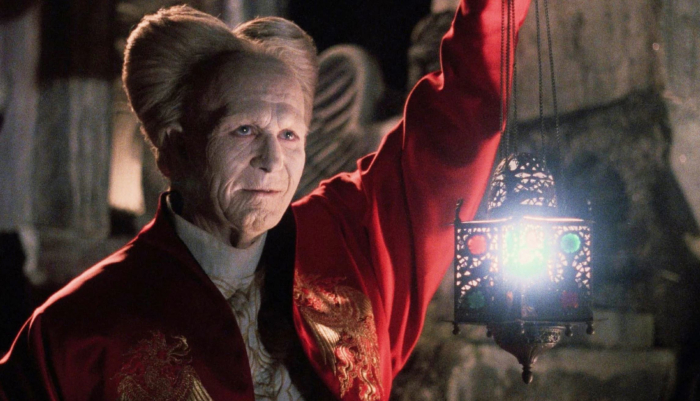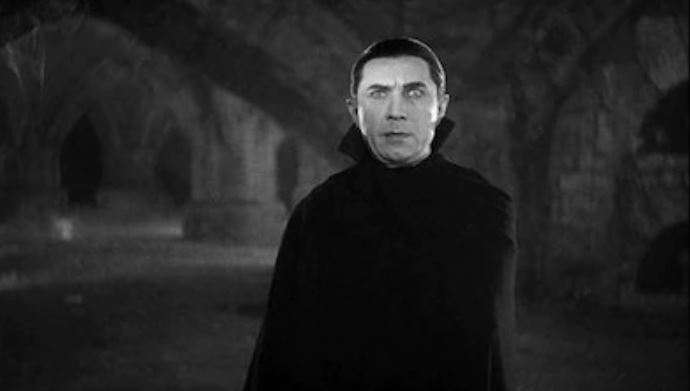Vampire Fact #13 (oh no) – The Importance of Dracula
It’s another vampire fact this month! Next month will be a Werewolf Fact again for October, of course, in time for Halloween.
But for now, let’s talk about a very important topic when it comes to vampires… the importance of everyone’s favorite count: Dracula.

Much like my Werewolf Fact “The Importance of The Wolf Man,” this Vampire Fact will discuss the importance of Bram Stoker’s novel Dracula and the almost-impossible-to-overstate importance of how it shaped all popular conceptions of vampires afterward – and even retroactively affected vampire legends through scholarship and study.
I want to open by saying that this post is not setting out to discuss the historical context of Dracula itself as a literary work, neither in terms of when/how Bram Stoker wrote it (and to what degree it was influenced by things like Varney the Vampire and John Polidori’s The Vampyre), nor in terms of how much it relates to Vlad the Impaler. I am aware of the conversation around Bram Stoker and his work and the many discussions thereof, but that isn’t what I’m here to cover today. Right now, I’m focusing only upon the undeniable, massive influence the novel Dracula in itself has had upon vampires in popular culture essentially from the moment it was published all the way until today – and it will continue, as well.
I may, however, talk about all those kind of things in a separate post, as I have spent a great deal of time studying them and even publishing upon them (including an article diving deep into how Polidori doesn’t get enough credit overall in vampire study). But more on that later! For now, let’s talk about what Dracula did for vampires.
First off, for those unfamiliar with Dracula, you should be. If you enjoy vampires at all and haven’t read this book, that’s a big blind spot! First of all, you’d enjoy the heck out of it, and second of all, it’s the vampire book. That’s possibly even worse than having not seen The Wolf Man if you love werewolves (although it’s rather hard to say; they’re pretty much on par, even if Dracula is considered more important historically, as it’s a work of classic literature and movies don’t often get that level of respect, which I disagree with).
Tangent. Anyway.
In Dracula, we see the foundational aristocratic, blood-sucking, pale, red-eyed, fanged, clean, finery-wearing vampire with civilized manners (until he suddenly lacks them because he’s turned into a monster) – plus he’s a count, of course. He lives secluded in his grand castle high in the mountains of Eastern Europe, and he is seeking to rejoin society. Many vampires are/were also influenced by the romantic – twisted or not – angle in the story and Dracula’s obsession with one woman. Not everything of Dracula’s was picked up by popular culture, of course – primarily what was reused, appearance-wise, were the elements later found in film adaptations. For instance, his white hair and mustache (the latter no doubt influenced by Vlad the Impaler) from the book are generally turned to black hair and clean-shaven, thanks to films that followed. But still, it all started with this book.
The character of Dracula would impact literally all vampires to follow, in some fashion or another. The influence is all-encompassing and undeniable.

Please note that not all of this influence came from the novel Dracula alone – it also comes from ripoffs and adaptations thereof, especially in film, as mentioned. I’m talking things like Nosferatu and all the many Dracula film adaptations thereafter. Some concepts didn’t originate in Dracula itself – but they did come from things created from or otherwise heavily influenced by Dracula, so without Dracula, one can easily argue we wouldn’t have any of those things, either. Like werewolves with The Wolf Man (1941), a lot of these influences also come from film. Obviously it all originated with the novel and adaptations thereof, however, so the novel deserves the credit, ultimately.
Your average Halloween vampire has the classic Dracula concept; whether one wants to argue it was popularized directly from the book or from later film adaptations, you can’t deny the high-collared, well-dressed, tall dark and handsome pale vampire that became ubiquitous in recent decades. You know them, you love them – you’ve seen them every Halloween and on every bit of vampire merch afterward (except perhaps a few things after the Twilight renaissance, which I also won’t cover in this post).
Other than obvious design influences, Dracula and its film adaptations of course influenced the vampire “lore” afterward. Perhaps the biggest impact on vampires is simple: fangs. Vampires in folklore didn’t actually have fangs! Dracula completely popularized that. Many more details in the linked post as to where the fangs came from, etc.
What were some other things? Well, other than what I already mentioned, Dracula popularized the association of vampires with various kinds of animals (based in folklore), and it even popularized many concepts about vampire hunters, thanks to the ever-popular Abraham Van Helsing.
What else did it influence? Everything. Weaknesses, as well as how to become a vampire and vampires being a curse that the creature could spread to others, to humans, instead of a demonic being – and even the term “vampire” itself certainly saw a rise in the public eye from Dracula.
In truth, Dracula didn’t just influence vampire concepts – it influenced all vampire stories to follow and the entire worlds built around their concepts, both vampires, vampire hunters, the general feel and setting of the stories, the plots themselves – absolutely everything.
Please note too, of course, that Bram Stoker was not a slouch on research. He was very heavily influenced by folklore and elements of history, even if he put his own spin on it and made many additions. The fangs in particular have become just a part of vampires as a whole, concept, image, everything. Without fangs, is a vampire even a vampire these days? Not really, especially in the modern mindset – and let’s face it, vampires are made a million times cooler by the fangs.
If you want to read one of Bram Stoker’s biggest folkloric inspirations, check out a little book called Transylvanian Superstitions, Scripta Minora by Emily Gerard and Agnes Murgoci. This is a good publication of it, and the one I have always used.
So what do I mean when I say that Dracula retroactively affected vampire legends, study thereof, and scholarship on such matters? Well, it’s similar to what happened to werewolves over time. By creating interest in a particular “brand” of vampire, scholars began to scrape and search for legends that fit that “brand.” Did they really exist? How many “legends” were retroactively twisted around to suit a scholar’s needs/desires and/or how many were just created on the spot from thin air in order to say that the scholar “discovered” a legend wherein, for instance, a vampire has fangs?
This isn’t unheard of in scholarship, by any means – especially when it comes to folklore. It’s widely known that scholars will do such things, especially when it comes to academic argument. Am I saying I know of any in particular that were spawned from an interest in Dracula?
Not necessarily, but it’s certainly true that a lot of scholars and certainly most people in general assume things about Dracula or its spinoffs and adaptations that followed come from folklore, and some even use that when writing their academic work, when in fact they did not. It still pervades across the internet that vampires that don’t die in the sunlight are immensely silly and untrue to the folklore. Gosh, how ridiculous! Well, I hate to tell you, but that didn’t even originate with Dracula, either, nor did it come from folklore. For more details on where the “burning/dying instantly or quickly in the sunlight” concept for vampires came from, see my previous Vampire Fact on Sunlight.
And that gives you a nice overview, I think! There’s so much more to say, but an internet post isn’t really the place. I do plan to write some nonfiction publications on this and other topics, because werewolves won’t be my only nonfiction books, lemme tell you. Hope you enjoyed the post!
Until next time! But wait, there’s more (yes, I really just said that)…
Please be sure to sign up for my brand new free newsletter! You’ll get monthly folklore facts (Werewolf Facts, Vampire Facts, and sometimes others in special editions), free fiction, free nonfiction articles, and more, all straight to your inbox! For signing up, you get a free full short story and a free extended preview of my nonfiction book The Werewolf: Past and Future. Don’t worry – I won’t spam you, and you can unsub whenever you like!